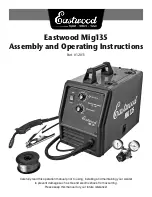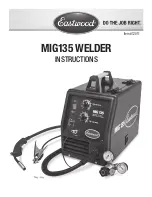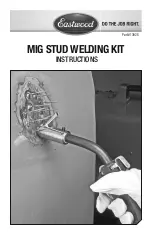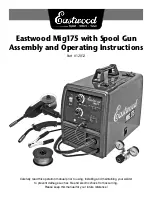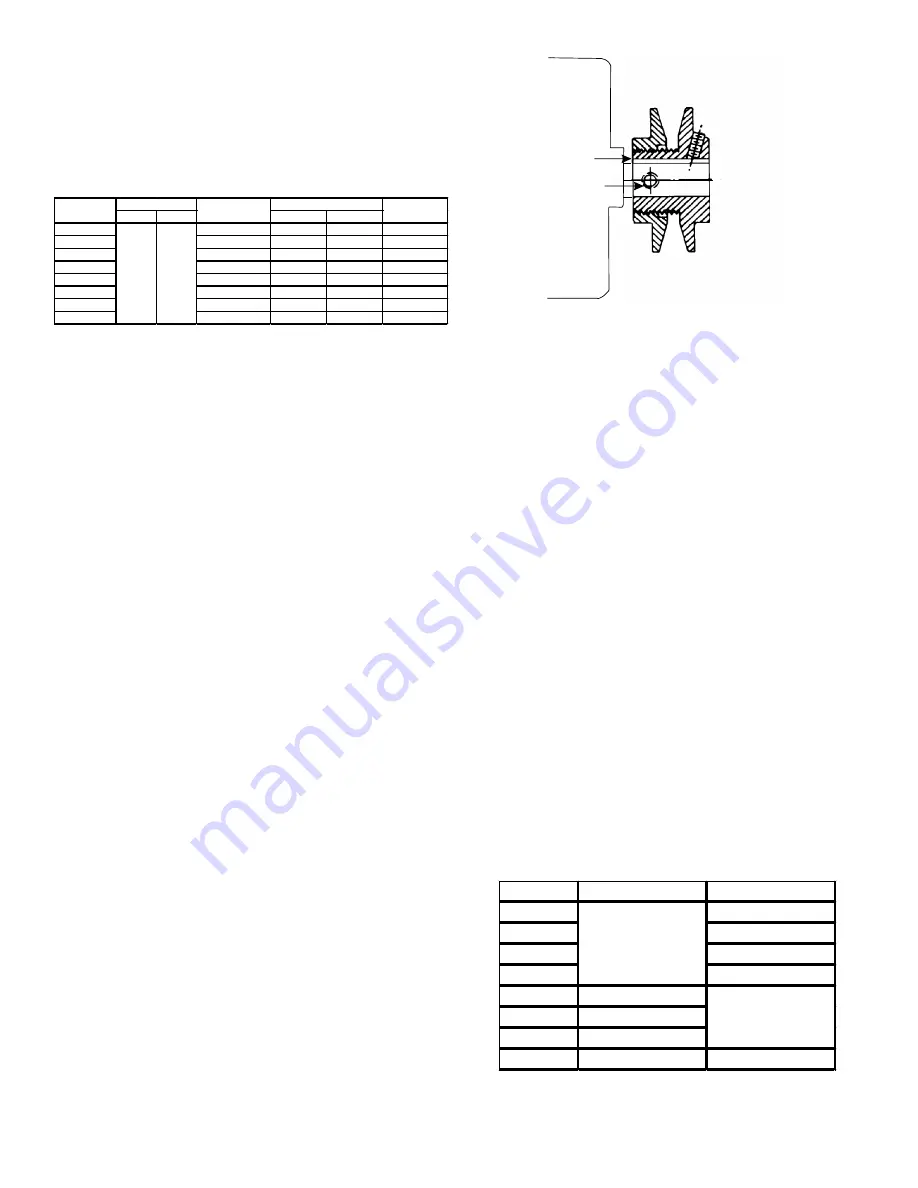
13
*Apply force to the center of the span.
t = Span length, inches
C = Center distance, inches
D = Larger sheave diameter, inches
d = Smaller sheave diameter, inches
h = Deflection height, inches
DRIVE BELT TENSION ADJUSTMENT
BELT
DRIVE
Used
New
DBH/DBC090*V
2.6 to 3.6
4.5+/-.5
5.5+/-.5
1/4+/-1/16
DBH/DBC090*S
3.0 to 4.0
4.5+/-.5
5.5+/-.5
1/4+/-1/16
DBH/DBC102*V
2.6 to 3.6
4.5+/-.5
5.5+/-.5
1/4+/-1/16
DBH/DBC102*S
3.0 to 4.0
4.5+/-.5
5.5+/-.5
1/4+/-1/16
DBH/DBC120*V
2.6 to 3.6
4.5+/-.5
5.5+/-.5
1/4+/-1/16
DBH/DBC120*S
3.0 to 4.0
4.5+/-.5
5.5+/-.5
1/4+/-1/16
DBC150*V
3.0 to 4.0
4.5+/-.5
5.5+/-.5
1/4+/-1/16
DBC150*S
4.2 to 5.2
4.5+/-.5
5.5+/-.5
1/4+/-1/16
A
Standard
MODEL
DEFLECTION
(in)
TYPE
SHEAVE
DIAMETER (d) (in)
DEFLECTION FORCE (lbs)
Recommended Pounds of Force Per Belt
When new V-belts are installed on a drive the initial
tension will drop rapidly during the first few hours. Check
tension frequently during the first 24 hours of operation.
Subsequent re-tensioning should fall between the minimum
and maximum force. To determine the deflection distance
from the normal position, use a straightedge or stretch a
cord from sheave to sheave to use as a reference line. On
multiple belt drives, an adjacent undeflected belt can be
used as a reference.
MOTOR SHEAVE ADJUSTMENTS
Vl, Vm & 2vp Variable Pitch Key Type Motor
Sheaves
The driving and driven sheaves should be in alignment with
each other and the shafts parallel.
Vl & Vm Sheaves Adjustment
1.
Loosen set screw “B” using a 5/32” Allen key.
2. Making half or full turns from closed position, adjust
sheave pitch diameter for desired speed. DO NOT
OPEN MORE THAN SIX FULL TURNS.
3.
Tighten set screw “B” securely over flat.
4. Carefully put on belts and adjust belt tension. DO
NOT FORCE BELTS OVER GROOVES.
5.
Ensure all keys are in place and the set screws tight
before starting drive. Recheck set screws and belt
tension after 24 hours service.
NOTE: Future adjustments should be made by
loosening the belt tension and increasing or
decreasing the pitch diameter of the sheave by
half or full turns as required. Readjust belt
tension before starting drive.
C
B
VL & VM
NOTE: Do not operate sheave with flange
projecting beyond the hub end.
Electrical Input Check
Make preliminary check of evaporator fan ampere draw
and verify that motor nameplate amps are not exceeded. A
final check of amp draw should be made upon completion
of air balancing of the duct system (see Appendix B).
Refrigeration System Checks
Heat pump units are equipped with thermal expansion
valves.
Ensure the hold-down bolts on the compressor are secure
and have not vibrated loose during shipment. Check
that the vibration grommets have been installed and
visually check all piping for damage and leaks and repair
if necessary. The entire system has been factory charged
and tested, making it unnecessary to field charge. Factory
refrigerant charge is shown on the unit’s nameplate.
To confirm charge levels or, if a leak occurs and charge
needs to be added to the system, it is recommended to
evacuate the system and recharge refrigerant to the unit’s
nameplate specifications. This unit has been rated in
the cooling mode at the AHRI rated conditions of: indoor
(80°F db/67°F wb) and outdoor (95°F db). While operating
at this condition, the superheat (measured at the suction
service port located near the compressor) or the subcool
(measured at the outdoor liquid line port) should be within
the range given in the following table.
Unit
Subcool (°F)
Superheat (°F)
DBC090*
11 to 15
DBC102*
10 to 14
DBC120*
10 to 14
DBC150*
11 to 17
DBH090*
3 to 7
DBH102*
13 to 17
DBH120*
9 to 13
DBH150*
10 to 14
20 to 25
N/A
10 to 15
Summary of Contents for DBC Series
Page 44: ...44...
Page 45: ...45...
Page 46: ...46 THIS PAGE IS INTENTIONALLY LEFT BLANK...






























